
We continue with our series on the Vogue 100: A Century of Style exhibition, which just opened in Manchester after making its debut at London's National Portrait Gallery. We were invited along to the exclusive preview event attended by the British Vogue editor herself, Alexandra Shulman and mingled with guests from the art and fashion world at the after-party set within the breathtaking main space of the beautiful historic building. We got to speak the curators of this huge cultural event, including Fiona Corridan, Contemporary Art Curator Manchester Art Gallery...
Could you tell us more about the historic dresses on display here at the museum?
The Schiaparelli ensemble is a brand new piece that's been purchased for the collection, because we received a couple of thousand pounds from the heritage lottery fund to buy couture for the collection. We have one of the best costume collections in the UK outside the V&A and the Fashion Museum in Bath. So we're looking to buy new pieces that are museum standard, so they have to be really high quality, and it's really hard to find vintage couture pieces that are good enough to be in a museum collection, because people wear them; that's the nature of costume and clothing. So the Schiaparelli is really important to our collection and it's a brand new addition to the Vogue 100 show; it wasn't shown at the National Portrait Gallery, it was only shown in Manchester. And because there's a vintage Cecil Beaton photograph of Wallis Simpson wearing the same outfit the night before her wedding to the Duke of Windsor, in 1937, it's a really important piece, so there's a nice triangle between Elsa Schiaparelli, Wallis Simpson and Cecil Beaton; they were all kind of key figures in the 1930s; Elsa Schiaparelli is one of the most important female couturiers of the twentieth century. So it's nice to bring all three of those characters together in one space.
There's a Schiaparelli show that's on there until October as well, including other 1930s designers, and hats and shoes, but every four months or so we do a new exhibition at Platt Hall (in Rusholme), so next is Mary Quant in Autumn.
 Caption
It's great that graduate designers are being showcased in the Fashion and Freedom exhibition; how are they chosen?
Caption
It's great that graduate designers are being showcased in the Fashion and Freedom exhibition; how are they chosen?
We linked up with different colleges who were doing degrees, so we went to the tutors and talked to them about the concept of the show, and they then did projects with the students to do illustrations and make finished outfits. They then selected some to show alongside the established designers such as Roksanda, Vivienne Westwood and Emilia Wickstead. And that show is touring nationally, so their work is going to be shown all over the country. What we were amazed by was that you couldn't tell who was a designer and who was a student; they do hold up really well with those other designer pieces. The sheer creativity that you see is incredible.
 Caption
How much do you work on fashion-focused exhibitions and do you have a preference for them?
Caption
How much do you work on fashion-focused exhibitions and do you have a preference for them?
I'm mainly contemporary art but since Maria has become director and invested so much more in the costume collection here, there is so much more focus on fashion and design. We've got an amazing design collection, furniture and textiles, so there's a lot more focus on that as well as the fine art. I do have an interest in fashion but it's just kind of grown since there have been more and more of those collections coming up, so I'm finding out more and more about that kind of work. And we have our costume curator Miles Lambert who knows the costumes inside out. He's the person buying the couture for the collection and I've been working quite closely with him on the modern Japanese design show and then on Vogue 100, and we've been to see some couture pieces in various places as well. I just love it, so I'm building up that kind of interest I suppose. We've been collecting costume and design for so long but we've not actually brought them together in that way before, so we're now thinking about the collection as a whole, not just the fine arts collection, the decorative arts collection, the costume collection, but Manchester Art Gallery's collection; and how all those things work in relation to each other. So we're going to be doing much more of that, especially in the design gallery. But you'll notice around the historic collections, the Victorian art collection, we've got costume in there and furniture in there.
 Caption
How often do you mirror exhibitions which start out in London and how important do you think it is to give people that chance to see those shows?
Caption
How often do you mirror exhibitions which start out in London and how important do you think it is to give people that chance to see those shows?
We do a real mix of homegrown exhibitions and some touring ones. We've got two back-to -ack, so Vogue 100 and then Strange and Familiar in the Autumn which is another photography show; we thought that both of those shows worked really well with our programme so we decided to do them. Then after that it's homegrown for another year or so. So every two to three years we'll do one or two big touring shows, then that gives us the breathing space here to start planning two or three years in advance, because if you're putting together an exhibition, especially of historic work, it can take two or three years to find all the pieces that need to go in the show. So Robin Muir curated the Vogue 100 show, and he's been working on that for five years, so to find some of those historic pieces has taken him that long, and it's the same with any other show you do. If you're working with a contemporary artist, it might take you two years to develop the show if it's brand new work, because you come up with the concept then think about what the work is going to be, give them time to make it, then you plan the show, so they are all pretty much a year to eighteen months to put together an exhibition, and a big historic exhibition can take five years. We were talking to the National Portrait Gallery for nearly eighteen months to two years, so they developed the show with Robin and with Vogue, and then once they knew what the show was going to be, we were touring partners. We worked with them on a couple of things, so they knew how we worked and we knew how they worked, and then they trust us to have a hand in a show of that scale after we worked with them quite a bit.
 Caption
Caption
I think it is important to have the show open in London and have the kind of press coverage that they've had down there, because since people have found out it's coming here we've been getting calls from all over the country; "Oh you're getting that show that was in London and we want to come and see it”, so in some respects we were nervous because we knew that the national press would have already covered the show down in London, but actually, word of mouth and the fact that it's already had good reviews is fantastic. So it's important that we do our own homegrown shows, but it's also important that we do touring, major international shows as well, because some of those national galleries have the resources, the budget and contacts to bring together a show of that scale that we might not necessarily have. But we always try and put a Manchester spin on those shows, like with the Schiaparelli, or thinking about the interpretation of how it might work differently in Manchester.
Look out for part three of our Vogue 100 series featuring an interview with Vogue Contributing Editor Robin Muir!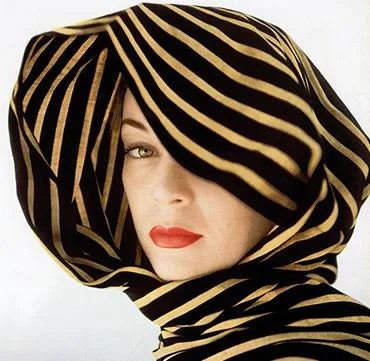
 We continue with our series on the Vogue 100: A Century of Style exhibition, which just opened in Manchester after making its debut at London's National Portrait Gallery. We were invited along to the exclusive preview event attended by the British Vogue editor herself, Alexandra Shulman and mingled with guests from the art and fashion world at the after-party set within the breathtaking main space of the beautiful historic building. We got to speak the curators of this huge cultural event, including Fiona Corridan, Contemporary Art Curator Manchester Art Gallery...
Could you tell us more about the historic dresses on display here at the museum?
The Schiaparelli ensemble is a brand new piece that's been purchased for the collection, because we received a couple of thousand pounds from the heritage lottery fund to buy couture for the collection. We have one of the best costume collections in the UK outside the V&A and the Fashion Museum in Bath. So we're looking to buy new pieces that are museum standard, so they have to be really high quality, and it's really hard to find vintage couture pieces that are good enough to be in a museum collection, because people wear them; that's the nature of costume and clothing. So the Schiaparelli is really important to our collection and it's a brand new addition to the Vogue 100 show; it wasn't shown at the National Portrait Gallery, it was only shown in Manchester. And because there's a vintage Cecil Beaton photograph of Wallis Simpson wearing the same outfit the night before her wedding to the Duke of Windsor, in 1937, it's a really important piece, so there's a nice triangle between Elsa Schiaparelli, Wallis Simpson and Cecil Beaton; they were all kind of key figures in the 1930s; Elsa Schiaparelli is one of the most important female couturiers of the twentieth century. So it's nice to bring all three of those characters together in one space.
There's a Schiaparelli show that's on there until October as well, including other 1930s designers, and hats and shoes, but every four months or so we do a new exhibition at Platt Hall (in Rusholme), so next is Mary Quant in Autumn.
We continue with our series on the Vogue 100: A Century of Style exhibition, which just opened in Manchester after making its debut at London's National Portrait Gallery. We were invited along to the exclusive preview event attended by the British Vogue editor herself, Alexandra Shulman and mingled with guests from the art and fashion world at the after-party set within the breathtaking main space of the beautiful historic building. We got to speak the curators of this huge cultural event, including Fiona Corridan, Contemporary Art Curator Manchester Art Gallery...
Could you tell us more about the historic dresses on display here at the museum?
The Schiaparelli ensemble is a brand new piece that's been purchased for the collection, because we received a couple of thousand pounds from the heritage lottery fund to buy couture for the collection. We have one of the best costume collections in the UK outside the V&A and the Fashion Museum in Bath. So we're looking to buy new pieces that are museum standard, so they have to be really high quality, and it's really hard to find vintage couture pieces that are good enough to be in a museum collection, because people wear them; that's the nature of costume and clothing. So the Schiaparelli is really important to our collection and it's a brand new addition to the Vogue 100 show; it wasn't shown at the National Portrait Gallery, it was only shown in Manchester. And because there's a vintage Cecil Beaton photograph of Wallis Simpson wearing the same outfit the night before her wedding to the Duke of Windsor, in 1937, it's a really important piece, so there's a nice triangle between Elsa Schiaparelli, Wallis Simpson and Cecil Beaton; they were all kind of key figures in the 1930s; Elsa Schiaparelli is one of the most important female couturiers of the twentieth century. So it's nice to bring all three of those characters together in one space.
There's a Schiaparelli show that's on there until October as well, including other 1930s designers, and hats and shoes, but every four months or so we do a new exhibition at Platt Hall (in Rusholme), so next is Mary Quant in Autumn.
 Caption
It's great that graduate designers are being showcased in the Fashion and Freedom exhibition; how are they chosen?
We linked up with different colleges who were doing degrees, so we went to the tutors and talked to them about the concept of the show, and they then did projects with the students to do illustrations and make finished outfits. They then selected some to show alongside the established designers such as Roksanda, Vivienne Westwood and Emilia Wickstead. And that show is touring nationally, so their work is going to be shown all over the country. What we were amazed by was that you couldn't tell who was a designer and who was a student; they do hold up really well with those other designer pieces. The sheer creativity that you see is incredible.
Caption
It's great that graduate designers are being showcased in the Fashion and Freedom exhibition; how are they chosen?
We linked up with different colleges who were doing degrees, so we went to the tutors and talked to them about the concept of the show, and they then did projects with the students to do illustrations and make finished outfits. They then selected some to show alongside the established designers such as Roksanda, Vivienne Westwood and Emilia Wickstead. And that show is touring nationally, so their work is going to be shown all over the country. What we were amazed by was that you couldn't tell who was a designer and who was a student; they do hold up really well with those other designer pieces. The sheer creativity that you see is incredible.
 Caption
How much do you work on fashion-focused exhibitions and do you have a preference for them?
I'm mainly contemporary art but since Maria has become director and invested so much more in the costume collection here, there is so much more focus on fashion and design. We've got an amazing design collection, furniture and textiles, so there's a lot more focus on that as well as the fine art. I do have an interest in fashion but it's just kind of grown since there have been more and more of those collections coming up, so I'm finding out more and more about that kind of work. And we have our costume curator Miles Lambert who knows the costumes inside out. He's the person buying the couture for the collection and I've been working quite closely with him on the modern Japanese design show and then on Vogue 100, and we've been to see some couture pieces in various places as well. I just love it, so I'm building up that kind of interest I suppose. We've been collecting costume and design for so long but we've not actually brought them together in that way before, so we're now thinking about the collection as a whole, not just the fine arts collection, the decorative arts collection, the costume collection, but Manchester Art Gallery's collection; and how all those things work in relation to each other. So we're going to be doing much more of that, especially in the design gallery. But you'll notice around the historic collections, the Victorian art collection, we've got costume in there and furniture in there.
Caption
How much do you work on fashion-focused exhibitions and do you have a preference for them?
I'm mainly contemporary art but since Maria has become director and invested so much more in the costume collection here, there is so much more focus on fashion and design. We've got an amazing design collection, furniture and textiles, so there's a lot more focus on that as well as the fine art. I do have an interest in fashion but it's just kind of grown since there have been more and more of those collections coming up, so I'm finding out more and more about that kind of work. And we have our costume curator Miles Lambert who knows the costumes inside out. He's the person buying the couture for the collection and I've been working quite closely with him on the modern Japanese design show and then on Vogue 100, and we've been to see some couture pieces in various places as well. I just love it, so I'm building up that kind of interest I suppose. We've been collecting costume and design for so long but we've not actually brought them together in that way before, so we're now thinking about the collection as a whole, not just the fine arts collection, the decorative arts collection, the costume collection, but Manchester Art Gallery's collection; and how all those things work in relation to each other. So we're going to be doing much more of that, especially in the design gallery. But you'll notice around the historic collections, the Victorian art collection, we've got costume in there and furniture in there.
 Caption
How often do you mirror exhibitions which start out in London and how important do you think it is to give people that chance to see those shows?
We do a real mix of homegrown exhibitions and some touring ones. We've got two back-to -ack, so Vogue 100 and then Strange and Familiar in the Autumn which is another photography show; we thought that both of those shows worked really well with our programme so we decided to do them. Then after that it's homegrown for another year or so. So every two to three years we'll do one or two big touring shows, then that gives us the breathing space here to start planning two or three years in advance, because if you're putting together an exhibition, especially of historic work, it can take two or three years to find all the pieces that need to go in the show. So Robin Muir curated the Vogue 100 show, and he's been working on that for five years, so to find some of those historic pieces has taken him that long, and it's the same with any other show you do. If you're working with a contemporary artist, it might take you two years to develop the show if it's brand new work, because you come up with the concept then think about what the work is going to be, give them time to make it, then you plan the show, so they are all pretty much a year to eighteen months to put together an exhibition, and a big historic exhibition can take five years. We were talking to the National Portrait Gallery for nearly eighteen months to two years, so they developed the show with Robin and with Vogue, and then once they knew what the show was going to be, we were touring partners. We worked with them on a couple of things, so they knew how we worked and we knew how they worked, and then they trust us to have a hand in a show of that scale after we worked with them quite a bit.
Caption
How often do you mirror exhibitions which start out in London and how important do you think it is to give people that chance to see those shows?
We do a real mix of homegrown exhibitions and some touring ones. We've got two back-to -ack, so Vogue 100 and then Strange and Familiar in the Autumn which is another photography show; we thought that both of those shows worked really well with our programme so we decided to do them. Then after that it's homegrown for another year or so. So every two to three years we'll do one or two big touring shows, then that gives us the breathing space here to start planning two or three years in advance, because if you're putting together an exhibition, especially of historic work, it can take two or three years to find all the pieces that need to go in the show. So Robin Muir curated the Vogue 100 show, and he's been working on that for five years, so to find some of those historic pieces has taken him that long, and it's the same with any other show you do. If you're working with a contemporary artist, it might take you two years to develop the show if it's brand new work, because you come up with the concept then think about what the work is going to be, give them time to make it, then you plan the show, so they are all pretty much a year to eighteen months to put together an exhibition, and a big historic exhibition can take five years. We were talking to the National Portrait Gallery for nearly eighteen months to two years, so they developed the show with Robin and with Vogue, and then once they knew what the show was going to be, we were touring partners. We worked with them on a couple of things, so they knew how we worked and we knew how they worked, and then they trust us to have a hand in a show of that scale after we worked with them quite a bit. Caption
I think it is important to have the show open in London and have the kind of press coverage that they've had down there, because since people have found out it's coming here we've been getting calls from all over the country; "Oh you're getting that show that was in London and we want to come and see it”, so in some respects we were nervous because we knew that the national press would have already covered the show down in London, but actually, word of mouth and the fact that it's already had good reviews is fantastic. So it's important that we do our own homegrown shows, but it's also important that we do touring, major international shows as well, because some of those national galleries have the resources, the budget and contacts to bring together a show of that scale that we might not necessarily have. But we always try and put a Manchester spin on those shows, like with the Schiaparelli, or thinking about the interpretation of how it might work differently in Manchester.
Look out for part three of our Vogue 100 series featuring an interview with Vogue Contributing Editor Robin Muir!
Caption
I think it is important to have the show open in London and have the kind of press coverage that they've had down there, because since people have found out it's coming here we've been getting calls from all over the country; "Oh you're getting that show that was in London and we want to come and see it”, so in some respects we were nervous because we knew that the national press would have already covered the show down in London, but actually, word of mouth and the fact that it's already had good reviews is fantastic. So it's important that we do our own homegrown shows, but it's also important that we do touring, major international shows as well, because some of those national galleries have the resources, the budget and contacts to bring together a show of that scale that we might not necessarily have. But we always try and put a Manchester spin on those shows, like with the Schiaparelli, or thinking about the interpretation of how it might work differently in Manchester.
Look out for part three of our Vogue 100 series featuring an interview with Vogue Contributing Editor Robin Muir!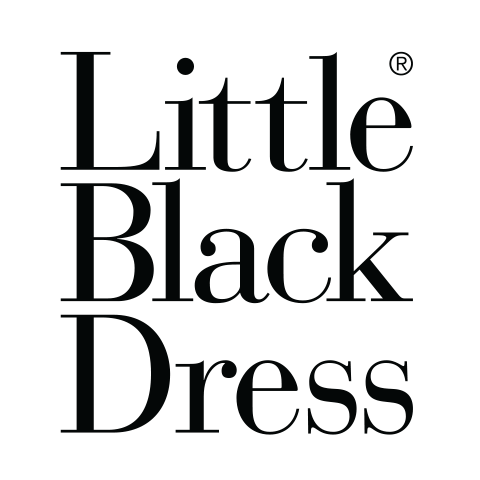
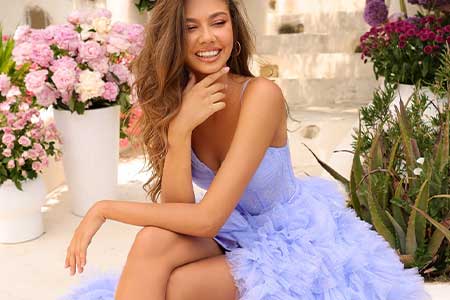
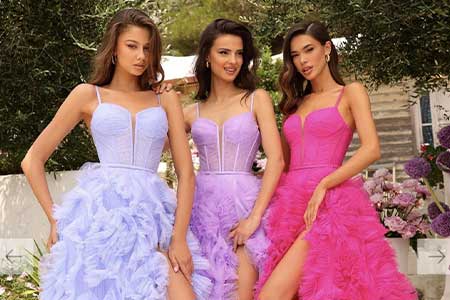
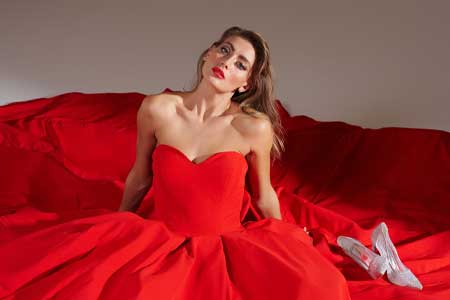
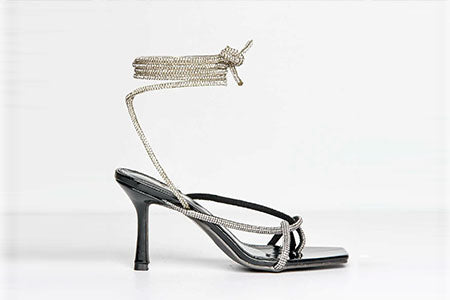
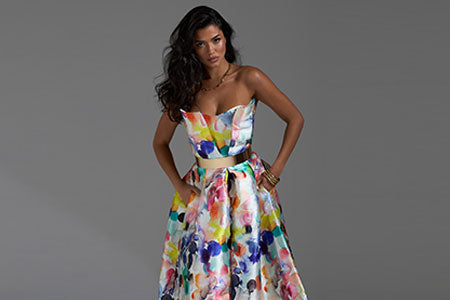
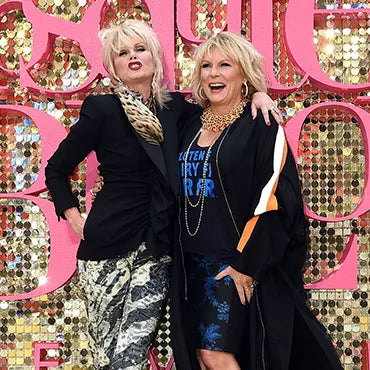
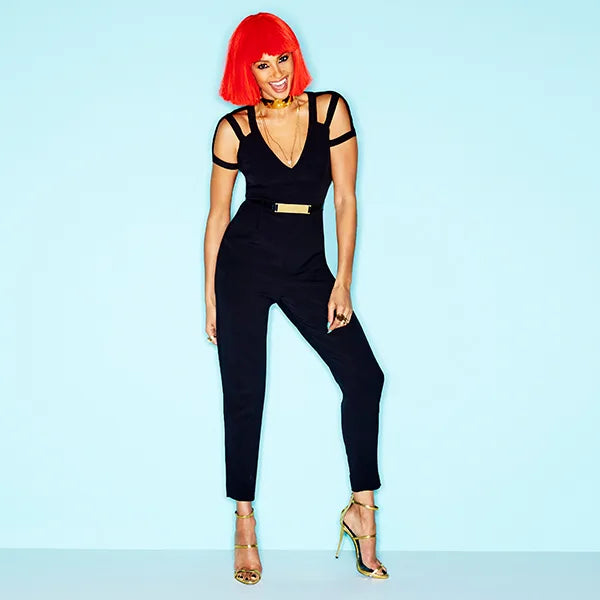
Leave a comment
This site is protected by reCAPTCHA and the Google Privacy Policy and Terms of Service apply.